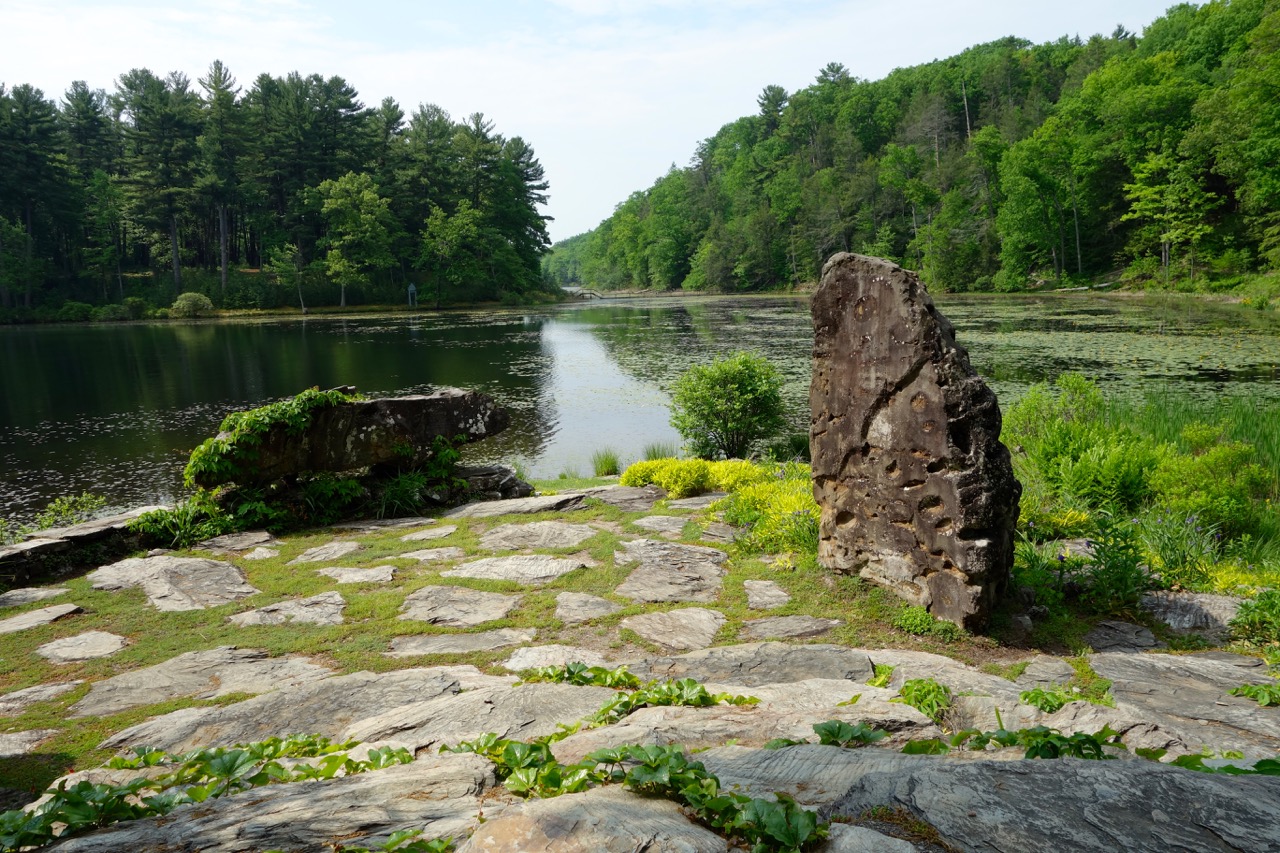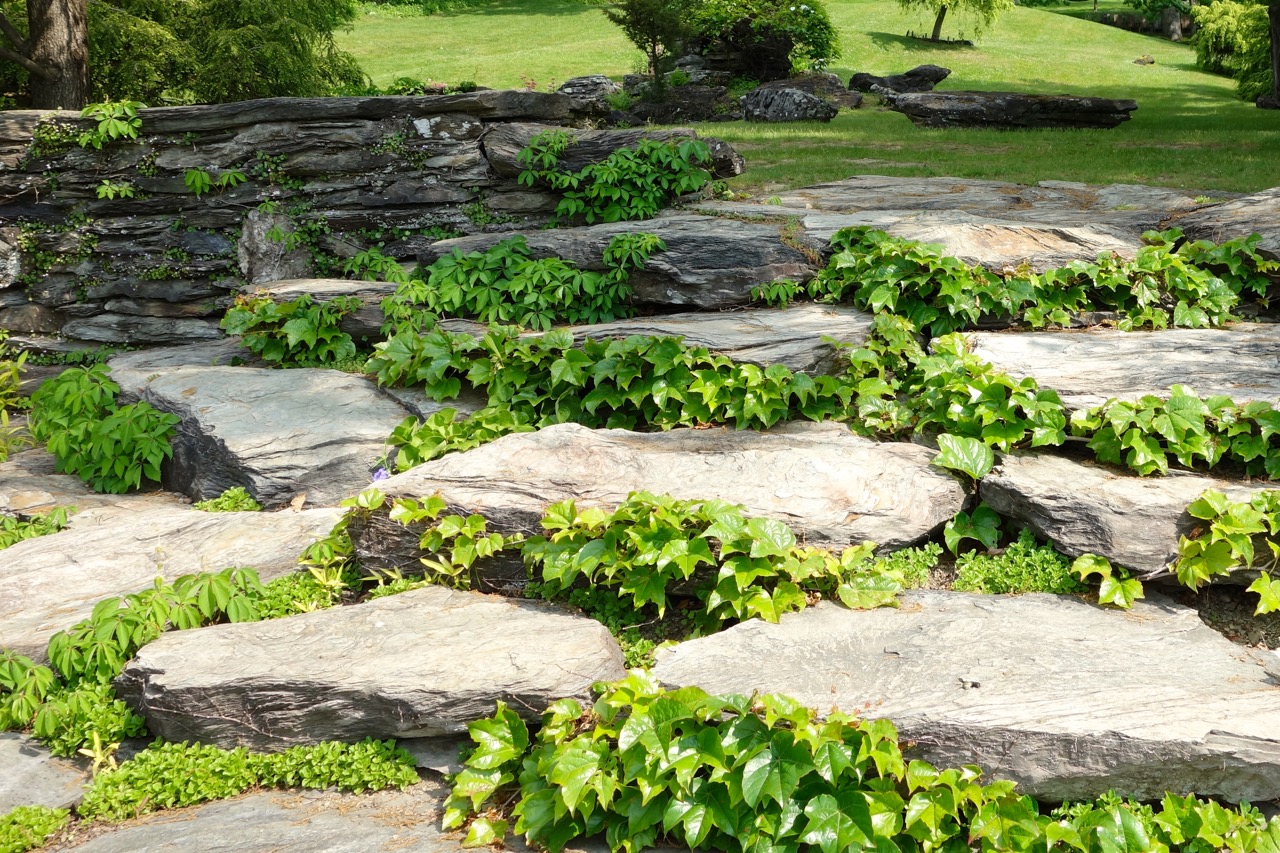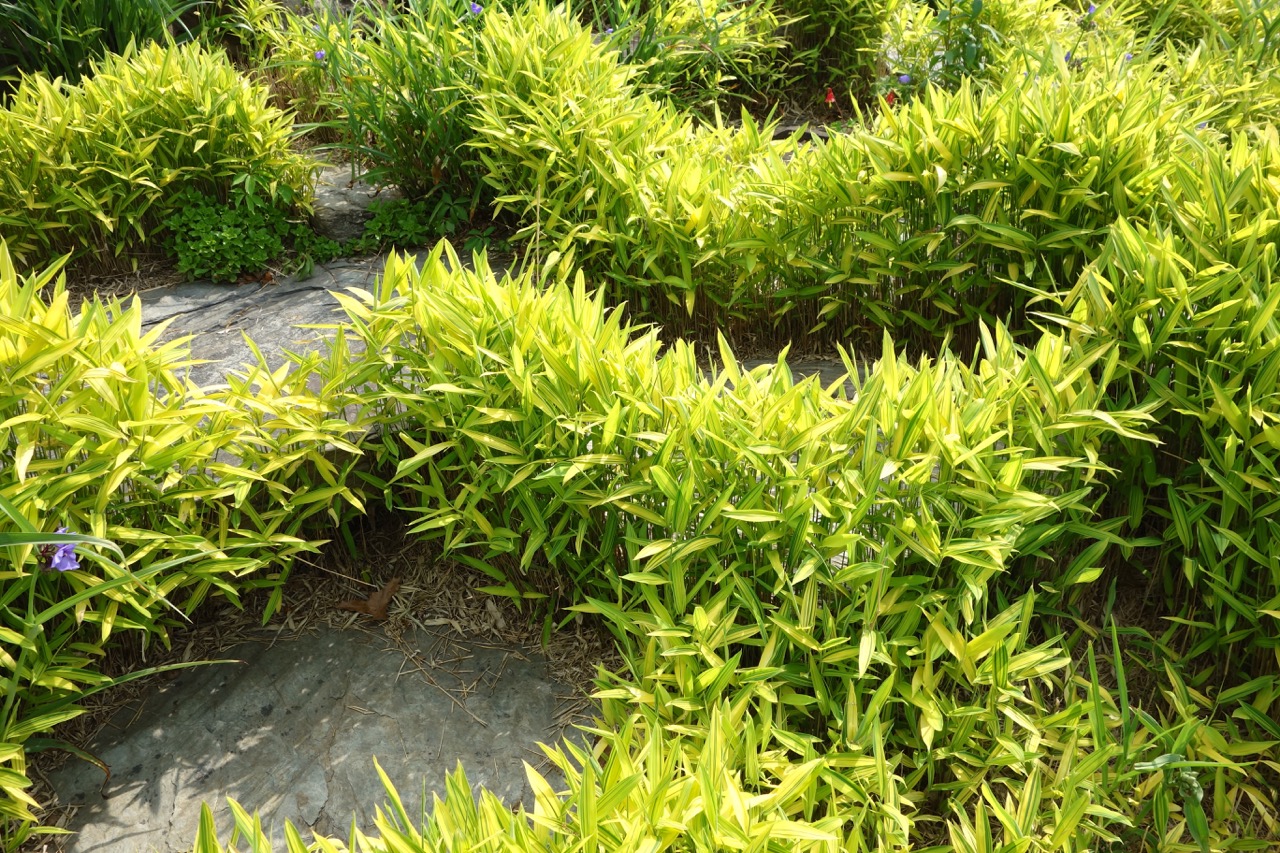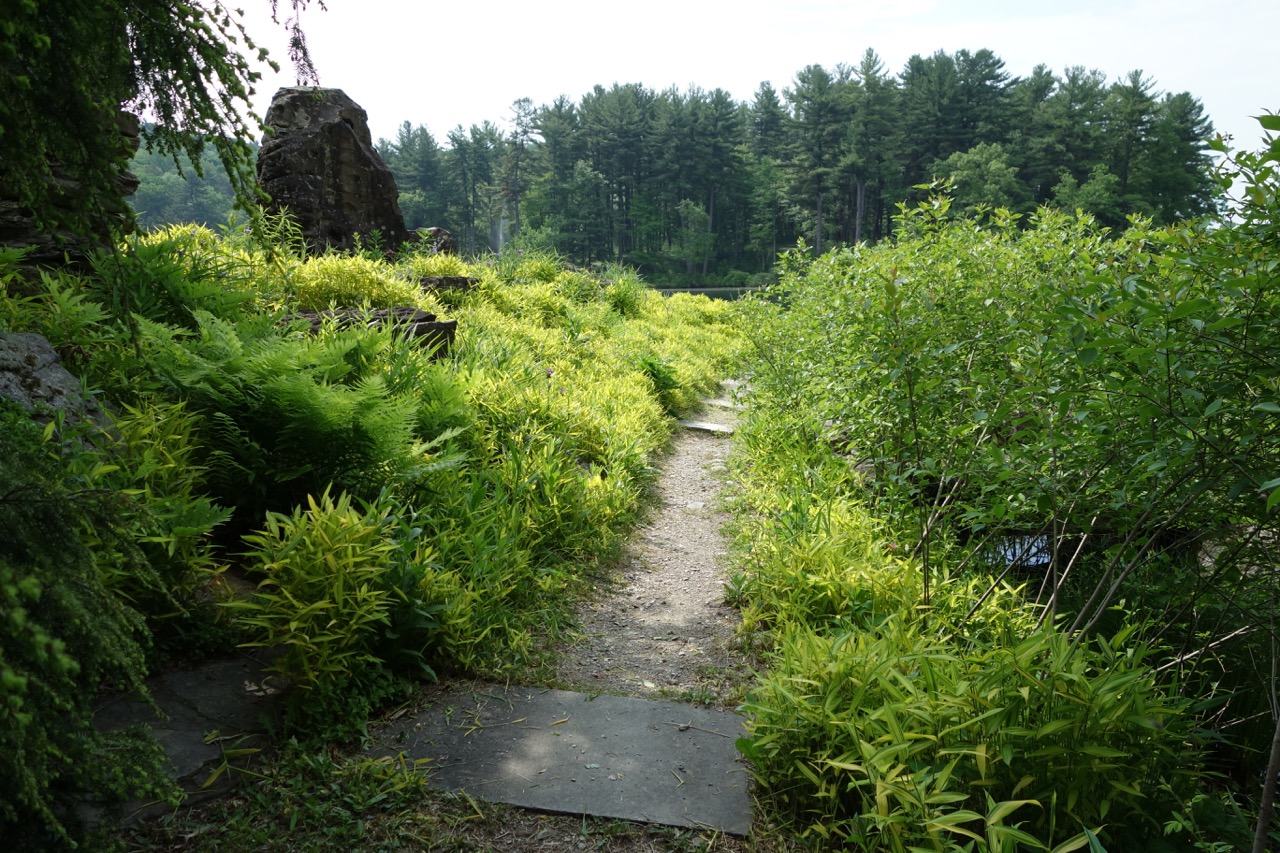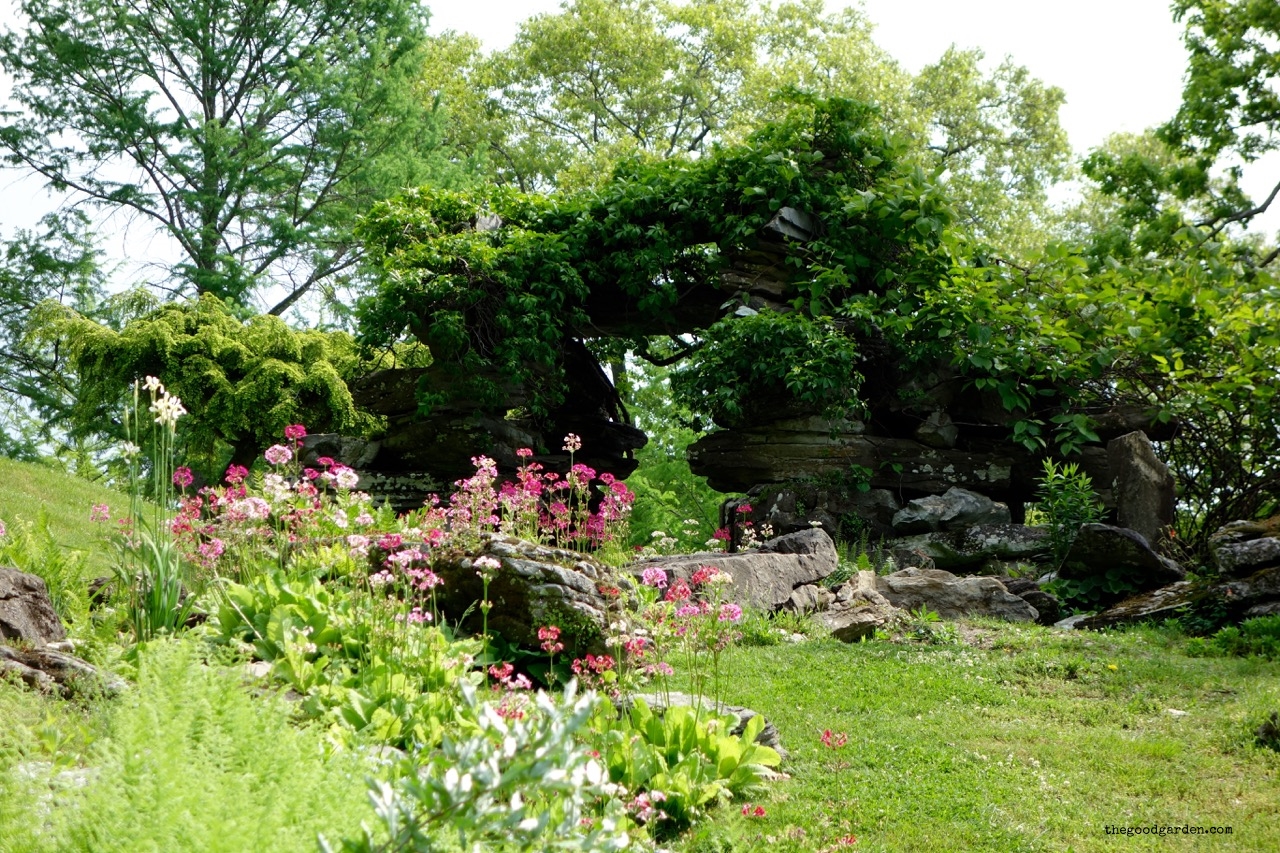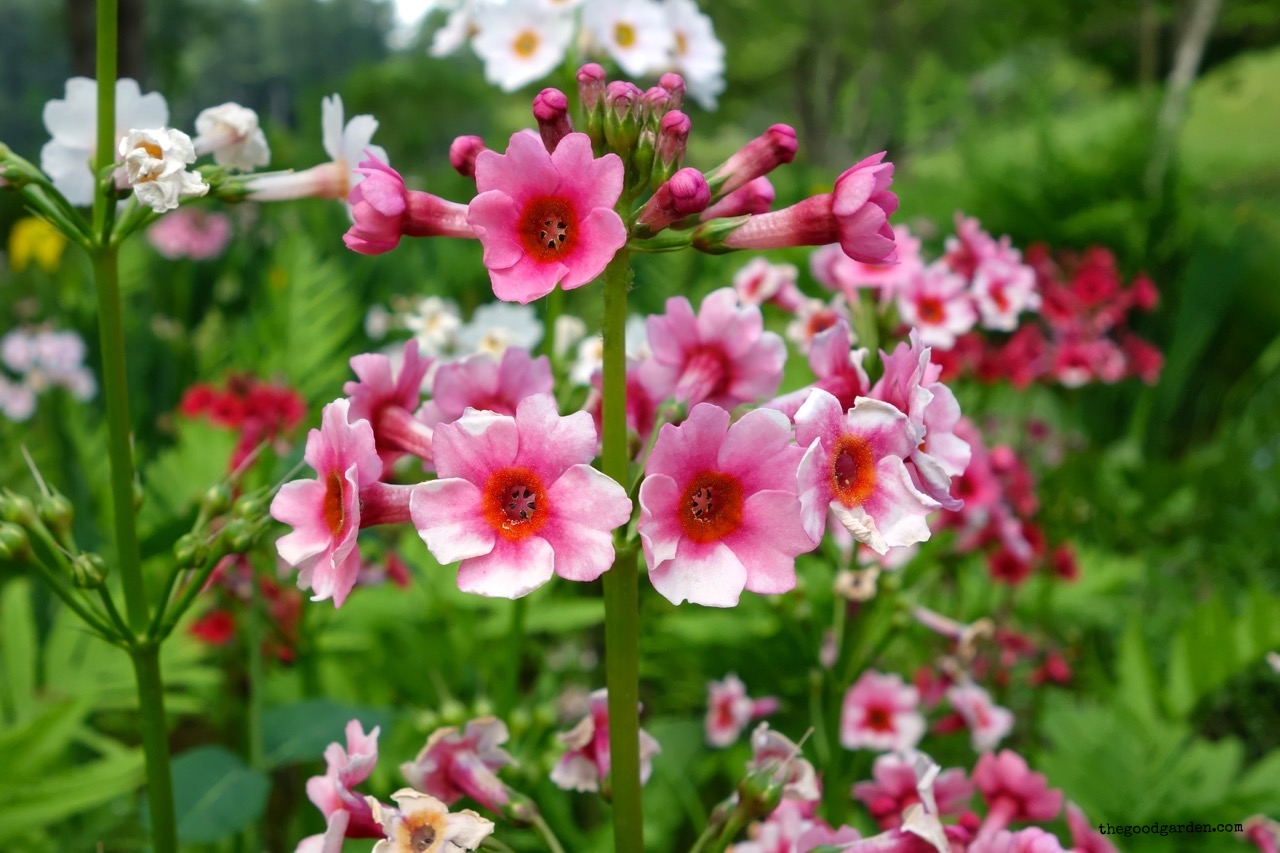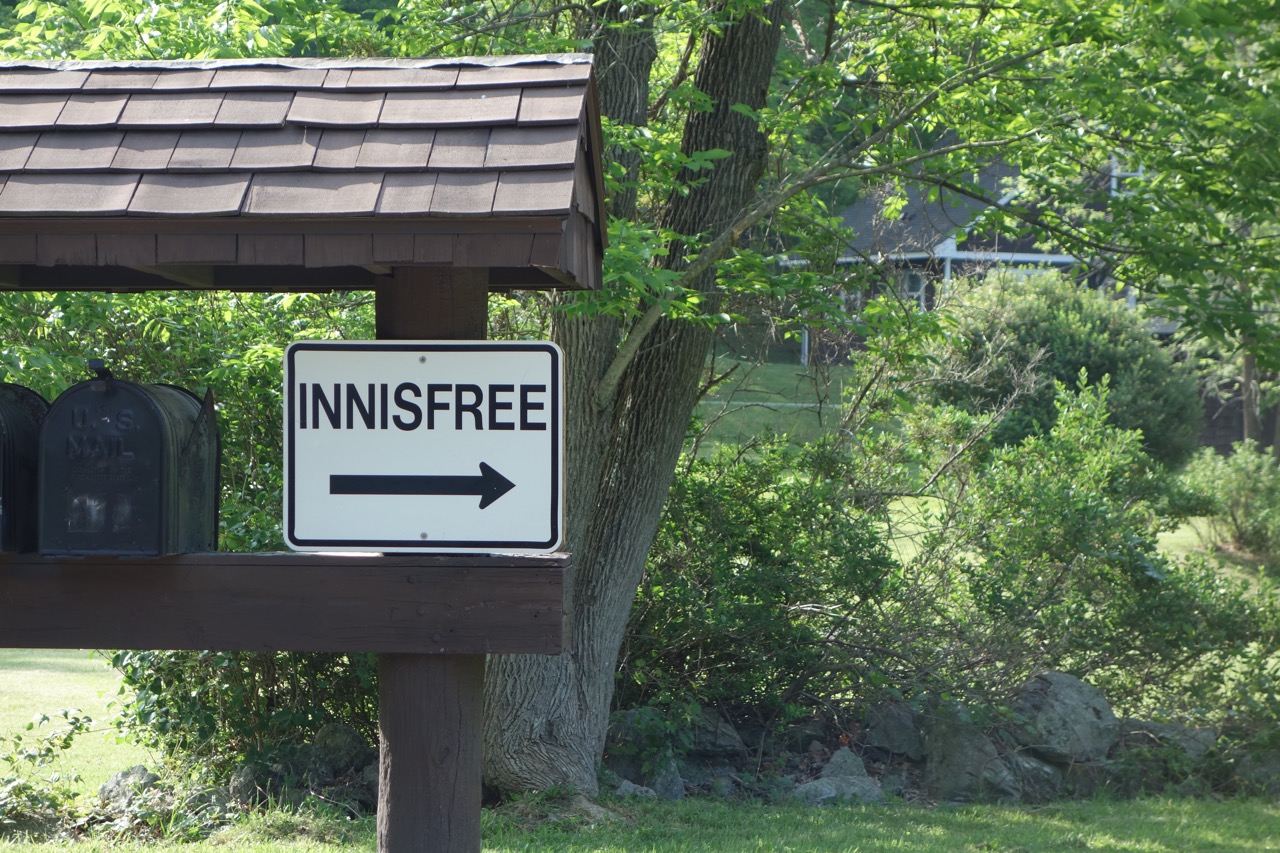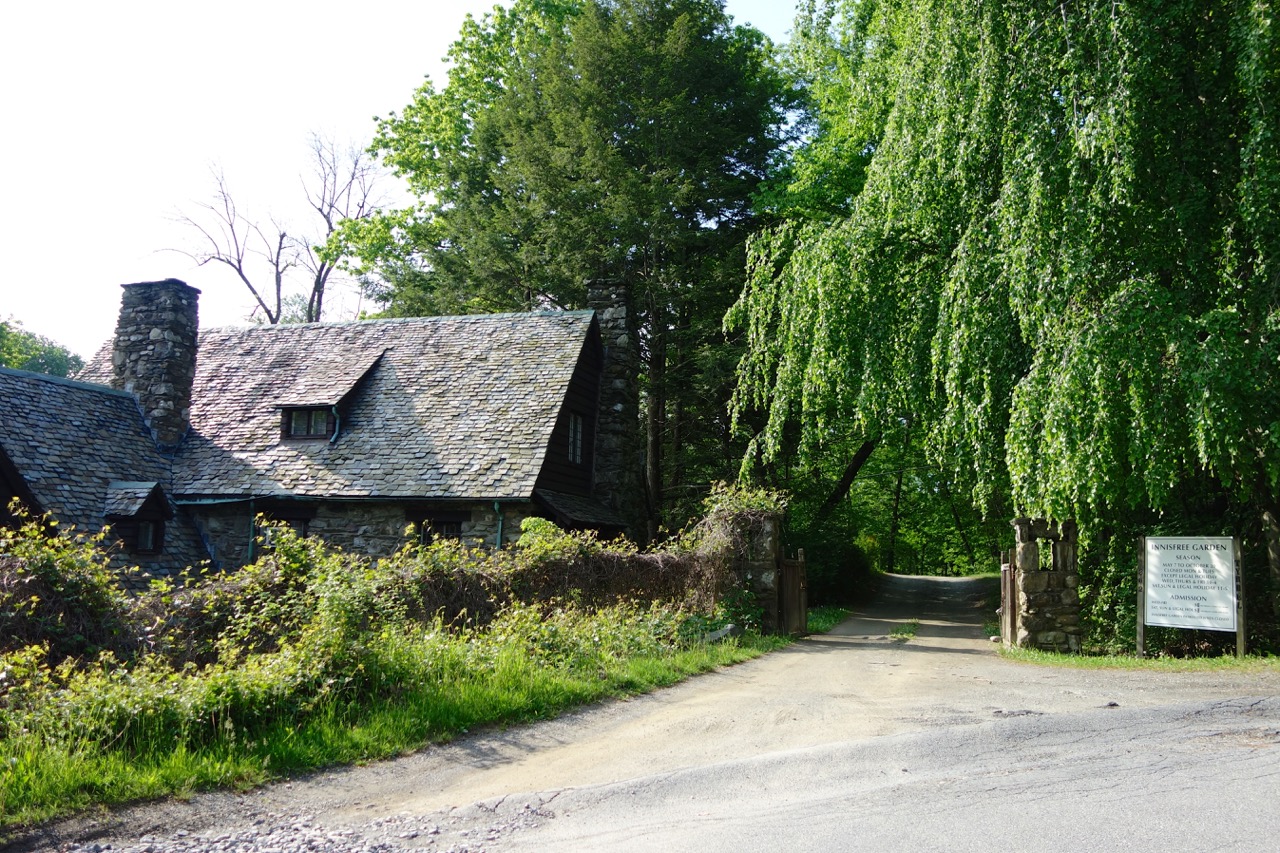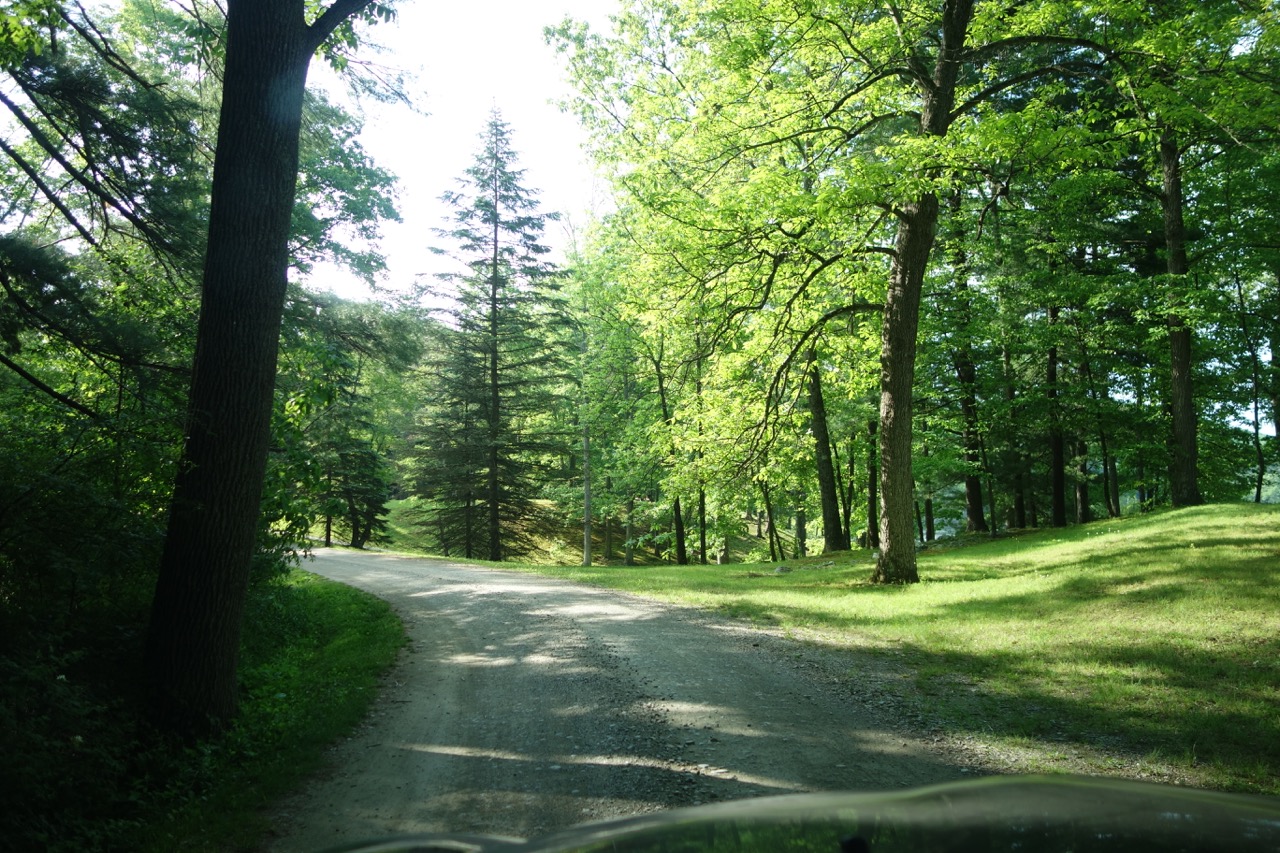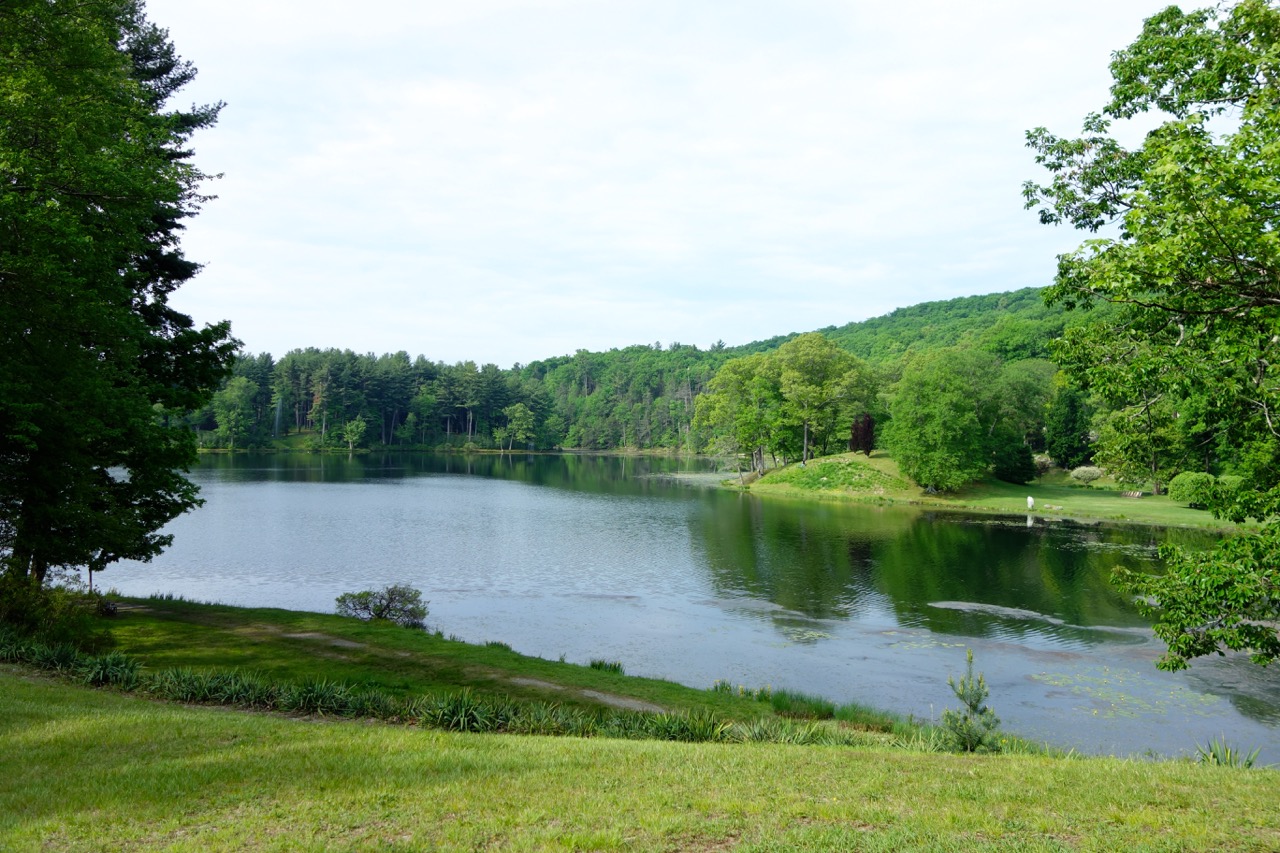Visiting Innisfree in Millbrook, New York, is like stepping into another world. Actually many different worlds. This amazing landscape uses Chinese garden techniques in a very modern American context.
Innisfree has been on my garden visit list for some time. When I travel, I ask friends for advice on gardens to visit. When I found myself in New York’s Hudson Valley, the advice that everyone gave me was “you must visit Innisfree!” I was intrigued by people’s description of the garden. Further research revealed that it is considered one of the “world’s ten best gardens”.
Although my GPS got confused (I recommend using the old fashioned directions from the website), it was an easy trip. Simple black and white signs led to the garden gate. In my slow drive to the parking area I saw deer, rabbits, and turtles, all accompanied by beautiful birdsong.
The winding drive leads to a clearing that opens to stunning Tyrrel Lake – the central element that organizes the design of the space.
I was especially fortunate to run into Kate Kerin, Innisfree’s landscape curator. She is a landscape architect with deep experience in horticulture and historical landscapes.
Innisfree represents 50 years of effort by landscape architect Lester Collins, who is also known for his work on the Miami Lakes Master Plan and the Hirshhorn Museum’s Sculpture Garden.
“For Innisfree, Collins collaborated with landowners/gardeners Walter and Marion Beck for about 20 years, and then ran it as a public garden for 33 more. He spent over 50 years on the project starting in 1938. Since the deaths of Walter in 1954 and Marion in 1959, Collins changed some important aspects and elements of the garden, “ Kerin explained.
“Collins' approach reflects his travels throughout Asia, mostly China, studying gardens in 1939 and '40. He also lived in Japan in the early 1950s. He also saw both Eastern and Western scholars of Asian art and design as mentors, so he was actively studying the topics, even when living in the US,” Kerin continued.
Given Innisfree’s East Asian inspiration, I was reminded of the Lingering Garden in Suzhou, China. This 1590’s garden was also designed around a lake with a meandering path that sets up distinct vignettes. Each pause frames a different view. Rocks create focal points. “Beck called these inward focused pictures ‘cup gardens’,” Kerin explained.
That is where the similarities end. The scale and detail of Innisfree feels uniquely American and exudes Collins vision. Unlike the 5-acre, entirely man-made Lingering Garden, Innisfree covers 185 acres and encompasses nature-made Tyrrel Lake. Instead of a series of garden pavilions, Innisfree uses fountains, and specimen trees to create focal points.
Kerin pointed out, “One of Collins’ core principles was to embrace the spirit of the place. This meant working with natural contours and ecological conditions. For example instead of filling in bogs to make traditional gardens, these wet areas were kept and enhanced. By adding formal elements next to wild ones - like mown lawn, stone, or a sculptural tree - the whole ensemble looks planned.”
One of my favorite sections was The Point pictured above. This section includes a bog garden that juts into the lake and looks back to a stacked stone structure called Stone Mountain. I felt that it captured beautifully some of the techniques that Kerin pointed out. Turtle, Dragon, and Owl rocks provide visual interest before the eye is drawn to the expanse of the lake. The contours of the land accentuate the sense of perspective from this vantage point. Stepping stones are inter-planted with ivy and Golden-variegated Japanese Forest Grass. In the background, Stone Mountain straddles a stream dotted with Japanese Primroses. Their smiling faces add a beautiful splash of color in May.
A visit to Innisfree is like a mini-vacation. This is a unique landscape that gets its power by enhancing natural beauty with the passion and personality of its creator.
Innisfree is located in Millbrook, New York, just 2 hours north of New York City.

